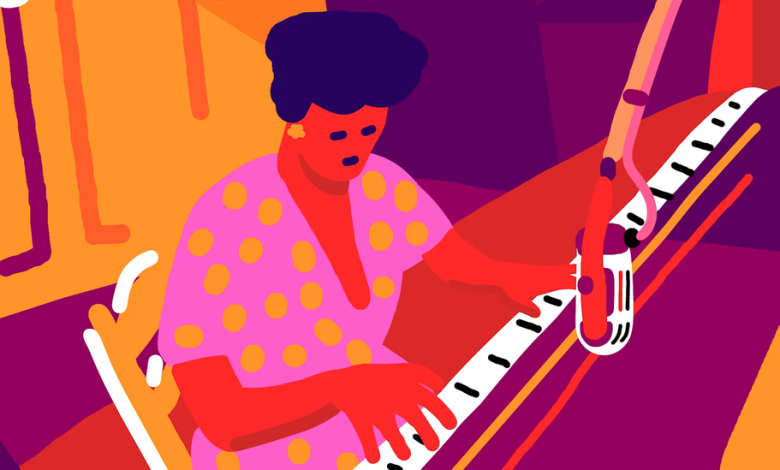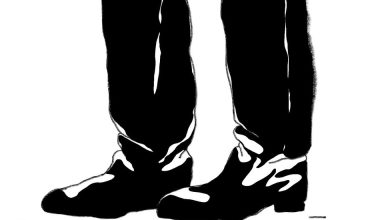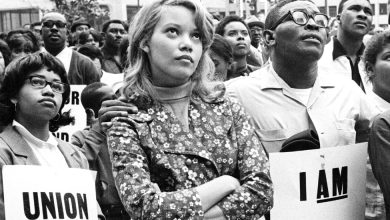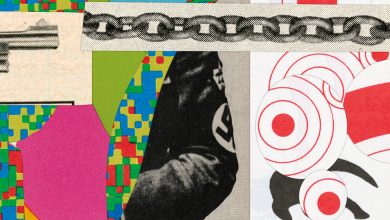5 Minutes That Will Make You Love Mary Lou Williams

Over the past few months, The New York Times has asked experts to answer the question, What would you play a friend to make them fall in love with jazz? We’ve gotten plenty of answers, with selections of favorites for artists like Duke Ellington, Alice Coltrane and Sun Ra and styles from the bebop era to the modern day.
This time, we’re turning to Mary Lou Williams, who fell in love with music as a toddler, sitting on her mother’s knee at the organ and learning by ear. Williams’s grandfather liked Western classical music, so she learned to play sonatas with an elegant touch; her stepfather liked boogie-woogie, so she developed a steam-engine left hand; her uncle liked Irish folk songs, so she memorized that repertoire, too.
Soon the “little piano girl” of Pittsburgh’s East Liberty neighborhood was a local celebrity, renowned among musicians even in the piano-player-packed city and in demand as an entertainer of wealthy white families. As a teenager she joined Andy Kirk and His 12 Clouds of Joy, a Kansas City big band on the make; her compositions and arrangements — not to mention her bravura playing style — helped make it one of the era’s leading bands.
In the coming decades, Williams stayed abreast of the major developments in jazz, following her ear and leading by example. She wrote briefly for both Duke Ellington and Benny Goodman, then became a mentor to the young bebop musicians rising up in Harlem.
But as artistically successful as she was, life for Williams never really got easy. Things have rarely been simple for genius Black musicians in America, but for a woman in jazz, things were especially tough. She wasn’t signed by a major label, and rarely received star billing. In 1954, while living in Paris, she stepped away — literally, midperformance — from jazz. She converted to Catholicism and stayed away from the music for three years. When she returned, she was as an activist and an educator as much as a pianist and composer.
Today, Williams is a Mount Rushmore figure in jazz, possibly the greatest multiplier of openness and mastery the music has yet known. Below, we asked a dozen musicians, scholars and critics to help take us on a tour of the music and mind of Mary Lou Williams. Enjoy listening to their choices, check out the playlist at the bottom of the article, and be sure to leave your own favorites in the comments.
◆ ◆ ◆
Helen Sung, pianist
It is fascinating to hear this live performance (from one of Williams’s last recordings) of “Roll ’Em,” a composition from early on in her career. One hears a broad swath of jazz history in her playing: boogie-woogie, swing, big-band riffs, subtle chromaticism in her left-hand chords when the band settles into a more modern trio format. Williams’s artistry is steeped in the blues and full of sass and rhythmic swagger. Her soloistic approach here recalls folks like Fats Waller, Art Tatum and Erroll Garner, where the bassist and drummer simply come along for a thrilling ride with the piano maestra.
◆ ◆ ◆
Courtney Bryan, pianist and scholar
In 1945, Williams, a pathbreaking genius composer, recorded her first extended composition, “Zodiac Suite.” Soon afterward, she presented chamber and full orchestra versions of the suite. The 12 movements are based on zodiac signs, each honoring creative people and friends.
Williams, a Taurus, dedicated this movement to Duke Ellington, Joe Louis and Bing Crosby. “Taurus” takes you on an adventure — starting with the solo piano opening statement in major and minor alternating with open tempo whole-tone figures, to the trio swinging in time with chromatic and bluesy themes with exciting detours, and then ending, as Williams explains in the liner notes, “with the same theme to indicate the personality that ‘only changes when it is forced to do so.’”
Following a music sabbatical and conversion to Roman Catholicism with a focus on charity, her return to music was in 1957 with Dizzy Gillespie at Newport Jazz Festival, where she performed movements from “Zodiac Suite.” She went on to compose several jazz-inspired Masses. The afterlife of “Zodiac Suite” can be heard in contemporary takes by a range of artists.
◆ ◆ ◆
Fredara Hadley, ethnomusicology professor
I learned who St. Martin de Porres is through Williams’s 1964 album “Black Christ of the Andes.” The album opens with a (mostly) a cappella choral piece named for the saint. It is part chant and part hymn but is rife with a reverence that reveals Williams’s expansive bebop and blues harmonic ingenuity. My favorite moment happens over three minutes after the song begins. It is right where I’m tempted to slip into the contemplative world Williams creates, but then she begins her brief piano solo with an awakening glissando and a habanera rhythm that reminds me that she’s not honoring just any saint, but St. Martin de Porres, an Afro-Peruvian priest who represents social justice and interracial harmony. This is soul music. “St. Martin de Porres” and all of “Black Christ of the Andes” is Williams’s spiritual offering to her chosen patron saint, and it is a gift of hope and reflection to our listening ears.
◆ ◆ ◆
Jason Moran, pianist
Williams’s “Night Life” is a blistering three-minute dance. It’s the kind of song that raises your heart rate because Mary Lou creates so much drama by pressurizing the syncopation between her perfect hands. In those hands we hear the drama of a night: A scene seems to unfold here with laughter and clinking glasses, and we can almost hear the dancers emerge onto the floor. (I practice my Lil Uzi Vert dance to this track.) This is an excellent example of her vocal quality as a pianist, describing a night out. Midway through, around 1:42, the scene changes; it’s as if someone had come in to rob the patrons of the club, but heard Mary Lou’s playing and changed their mind, joined the dance and bought everyone a round. By the end, Mary Lou is shoulder-dancing us all out into the street at daybreak. Time for work. I’ll always love Mary Lou.
◆ ◆ ◆
Tammy Kernodle, musicologist
This performance of “A Grand Night for Swinging” is taken from a 1976 live album of the same name. Written by her close friend and fellow pianist Billy Taylor, the tune became a staple in Williams’s repertory after 1957. She first recorded it in 1964 for the “Black Christ of the Andes” album, and it is featured on a few of the live albums she recorded during the last five years of her life. This rendition, however, is my absolute favorite as it displays how the richness of her artistry as a pianist had deepened during this late chapter of her career. It is funkier and grittier than the others that precede it, no doubt because of the chemistry that existed between Williams, the bassist Ronnie Boykins and the legendary drummer Roy Haynes.
Mary Lou had a reputation for pushing bass players and drummers. She wanted a particular kind of rhythmic drive and often coached her sidemen in real time by stomping her left foot or moving her head. But it is clear from the opening motive to the last chord that Boykins and Haynes knew exactly what Mary Lou wanted. They established a rhythmic pocket that allowed Williams to effortlessly weave line after line of blues-tinged improvisation. It is a reminder that when Mary Lou said she had played through every era of jazz, that she indeed had played and mastered many of the different iterations of jazz piano. This performance situates her squarely in the sonic genealogy of the East Coast hard bop aesthetic. But the unique hallmarks of Williams’s style are also very evident, especially her driving left hand, and the strong chord clusters she would periodically bang out in the lower register of the piano to break up the continuity of her comping. This is Mary Lou at her best!
◆ ◆ ◆
Seth Colter Walls, Times music critic
One mark of an influential artist is the ability to speak through modern-day disciples. When latter-day pianists on the level of Geri Allen and Aaron Diehl offer us informed and inventive takes on Williams’s 1940s “Zodiac Suite,” that’s a sign of its own. But what was Williams herself thinking about, when completing that ambitious composition in its various editions for small combo and chamber orchestra alike? On the evidence of sides cut for the Asch label, she was enjoying a wide range of styles — including Harlem stride and the beginnings of bop. A solo approach to W.C. Handy’s “St. Louis Blues” from this period reflects her composer’s sense of proportion as well as her wide-ranging ear; she starts at a stately pace, and adds delirious ornaments as she goes — eventually throttling into a thrilling, boogie-woogie gear.
◆ ◆ ◆
Carmen Staaf, pianist
One of the astonishing things about Williams is the number of musical eras during which she continued to break new ground. “Olinga” (from 1974’s fascinating “Zoning” album) exemplifies her ability to sound fresh, even after mastering so many earlier styles. Williams’s version of this Dizzy Gillespie composition is relaxed, soulful and grooving, yet constantly surprising. Her touch remains beautiful and lush across a wide dynamic and textural range. By bringing out individual notes within voicings and contrasting big chords with single-note lines, she creates a topography of sound, the music alive in multidimensional space. In the improvisation, her right hand freely pushes and pulls against the time over funky left-hand chords. Bluesy licks, long a central part of her sound, lead fluidly into bebop lines and more modern language; her soloing seems to encapsulate the history of jazz piano while looking ahead into its future.
◆ ◆ ◆
Daphne Brooks, Black studies scholar
The genius of Williams’s take on the Gershwins’ “It Ain’t Necessarily So” lies in both the context of this recording as well as its rich, ambling and contemplative content. Appearing as track No. 2 on her pivotal “Black Christ of the Andes” album, her post-Catholic conversion masterpiece, Williams’s cover of the “Porgy and Bess” trickster-villain Sportin’ Life’s ode to religious skepticism eschews the original’s vaudevillian flash in favor of offering a brooding ramble, a gently swinging peregrination that traverses hills and moves in and out of dark valleys to the rhythm of philosophical questioning and questing. Less Cab Calloway and Sammy Davis Jr. and more midnight Mary at the altar working out the complexities of faith, her reading of “It Ain’t Necessarily So” expands the lexicon of jazz spirituality.
◆ ◆ ◆
Ethan Iverson, pianist and writer
A fast piano blues is usually a “boogie-woogie.” That’s a rhyme, “boogie” and “woogie.” Rhymes repeat sound, and the musical characteristics of boogie-woogie include riffs and rhythms that constantly replicate. On the glorious 1939 side of “Little Joe From Chicago,” Williams suavely varies both the top and bottom patterns in a notably carefree fashion. Musicians call that kind of initiative “mixing it up.” Williams mixes it up, but her performance still has more than enough hypnotic, danceable repetition to make it classic boogie-woogie. (On the full band version with Andy Kirk, the lyrics turn out to be a sardonic appraisal of Louis Armstrong’s manager Joe Glaser: “Little Joe from Chicago wears a big blue diamond ring. Little Joe from Chicago never wants for anything. He handles plenty money and he dresses up like a king.”)
◆ ◆ ◆
Cory Smythe, pianist
It’s hard to top the opening of “Lonely Moments” — the way its spare octaves, separated at first by bewilderingly long silences, gather momentum and burst into rousing, syncopated harmonies. I imagine solitude might have been something like this for Williams, whose lonesome moments yielded so much thrilling invention. But I might like what comes next even more: a glissando that swings up past the “right” note and sounds, magically, like the piano in its exuberance is singing just a little sharp. The whole track is like this, suffused with flourishes that transform the solo piano into the sounds of an entire band. Notice the chords in her right hand that begin and end with little tremolos, perfectly calibrated to make the decaying piano tones do something they should not — shake, flutter, growl.
◆ ◆ ◆
Damien Sneed, pianist and professor
I first heard Williams’s recording of her original song “What’s Your Story Morning Glory” in my first year at Howard University in Washington, D.C. I immediately fell in love with her piano playing and was mesmerized by her voicings as well. This track showcases her effervescent melodic content combined in her right hand and her passionate comping in her left hand. Williams was a pianist, composer and arranger well ahead of her time. One of the things that stands out to me about her pianistic excellence is the subtle yet virtuosic quality in the development of her solos.
◆ ◆ ◆
Giovanni Russonello, Times jazz critic
OK. Now that you’ve gotten to know Mary Lou Williams’s brilliance, her generosity and her range, let’s learn a bit about how she sparred. Williams and the great avant-garde pianist Cecil Taylor were mutual admirers until she organized a joint concert at Carnegie Hall in 1977. So-called “free jazz” was one style of the music she never embraced, but the depths of Taylor’s talent and knowledge of musical traditions won her over. When the time came for the concert, however, he revolted: Taylor hated that she had chosen the rhythm section without him, and he felt she wasn’t giving his 12-tone approach enough room to run. The concert was titled “Embraced” (as was the resulting album), but the actual affair felt more like a joust. And yet, by the end, Williams had managed to establish some balance; on “Back to the Blues,” their last tune together, she digs a deep trench of boogieing rhythm and challenges Taylor in the upper register, where he often lit his brightest fires. As the bassist Bob Cranshaw and the drummer Mickey Roker lock in with her, around the 11:00 mark, Taylor’s two-handed flurries finally start to sound like they fit.
◆ ◆ ◆
Brandee Younger, harpist
This bass line pulls you right in. It’s grooving, it feels really good, and then the melody comes in and instantly makes your head turn. It makes you wonder, too, because harmonically it is sort of peculiar against the bass, yet still fits perfectly. It’s almost like the blending of two different worlds. The drummer and composer LaFrae Sci introduced me to “Ode to St. Cecile” while on the road with her band, the 13th Amendment. Learning how Williams composed this after converting to Catholicism, retreating and returning to music was a real eye-opener. It made me think about what the melody may have represented in her life at that moment. And musically, just the contrast between the thick, consistent groove and the contemplative melody is enough to keep you on the edge of your seat.
◆ ◆ ◆





